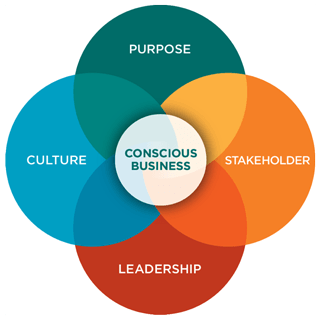

After elementary school, I thought my book report days were over. I never imagined that I would ever be compelled to write another one. But, time heals all wounds. I’m writing this one voluntarily.
I’ve published numerous posts about Jim Collins’ 2001 business best seller, Good To Great. Thousands of readers have enjoyed my insights on:
From the volume of web traffic, I learned that a lot of people were interested in (if not committed to) pursuing greatness. So I wrote more. In 2009, I shared how hard times had fallen upon 3 of the book’s 11 G2G Companies. One went bankrupt. Since then, two others (Wells Fargo and Fannie Mae) were involved in the mortgage meltdown. With that, 45% of the elite eleven could NOT sustain their great financial performances. Of the six remaining, one is tobacco company Phillip Morris. Isn’t that great?
The first line in Good To Great reads”
Sometimes that’s true. Sometimes the reverse is true. In any case, I have hereby hopped off the Good To Great bandwagon. And, jumped on a new one. My ride was good. But there’s better travels in sight.

After a nice ride, I’m off the Good to Great Bandwagon.

Let’s admit sometimes capitalism runs amok. We’ve witnessed greed driven events like the mortgage meltdown and the Enron implosion. There were a lot of big losers and very few winners. These “greed driven events” are not unique in the history of capitalism. The Haymarket Riot happened in 1886. At the root of all these examples is:
______________________
Conscious Capitalism was published in 2014 and is co-authored by:
We’ve listened to Nobel Prize winning economists and other experts speak of the importance of profits since the Industrial Revolution. Despite their bad name, profits are still a necessity, not a luxury. They are the fuel for the engine of capitalism. We can’t live without them. But when pursued as the single purpose, your train is more likely to derail.
One of the many profound concepts in the book borrows from Victor Frankel’s idea that:
“Happiness is not something to be pursued. It is something that ensues.”
They suggest that the same is true for profits.
Conscious Capitalism goes FAR beyond the idea of doing well by doing good. Do not dismiss it with that thought. Get it. Read it. It’s like four books in one as the four tenants are compelling and insightful on their own.
 Higher Purpose: People want to be part of something bigger than themselves. When that bigger thing aligns with their values, carrots and sticks become obsolete. This is true for company team members, customers and beyond.
Higher Purpose: People want to be part of something bigger than themselves. When that bigger thing aligns with their values, carrots and sticks become obsolete. This is true for company team members, customers and beyond.A conscious culture is very tangible to stakeholders and outside observers.
I confess that I’ve not been a “fan” or customer of Whole Foods Market. I apparently haven’t been all that conscious. So I didn’t get it. But John Mackey has raised my awareness and understanding of their value proposition just as Starbucks CEO Howard Schultz did with his book Onward. Both books have helped me begin to “get it”.
Even unconscious capitalists will be impressed by the list of financially successful companies on their list of conscious capitalism practitioners who have prospered over time.
Their sustained financial performance speaks for itself.
While Raj is not as dynamic as Simon Sinek, his presentation supports my suggestion WHY Conscious Capitalism should succeed Good To Great as the business bible for building sustained greatness.
By using our website, you agree to our use of cookies. Find out more information on how we use cookies, view our privacy policy.
8 Responses
Tom – an excellent shift in thinking. Thank you for sharing this post.
Tom, You got my attention! I’ll ask my son to get this for me as an early Christmas present as I want to read it now.
You referenced, Simon Sinek at the video clip. His new book Leaders Eat Last is worth your time.
Merry Christmas!
Scott (Scooter) Jenkins
Scott,
I covered Leaders Eat Last in Leadership Biology 201. That post includes a video that has an overview of the book.
For those interested in being part of “the movement”, there is a local chapter of like minded Conscious Capitalists in Chicago https://www.consciouscapitalismchicago.org/